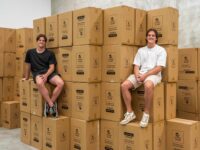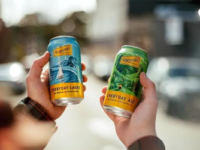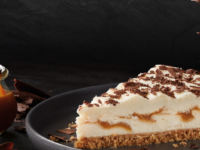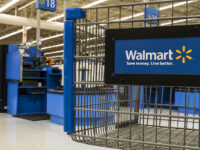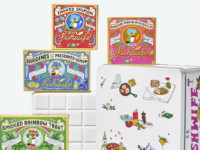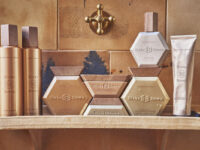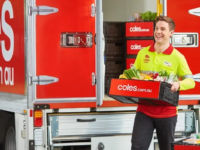When you think about “soda” or “pop”, brand names like Coca-Cola, Pepsi or even Dr Pepper might come to mind first. More recently, there has been a new wave of soda brands infiltrating the grocery aisle, largely within the prebiotic and probiotic category. According to analysis firm Grand View Research, the North American prebiotic and probiotic soda market generated $191.7 million of revenue in 2023. The market is expected to grow at a compound annual growth rate of 8.1 per
Unlock indepth features,executive

Unlock indepth features,executive
interviews and quarterly magazines
SUBSCRIBE NOW
Already a Premium subscriber? Log in
Just for$39.95per year

When you think about “soda” or “pop”, brand names like Coca-Cola, Pepsi or even Dr Pepper might come to mind first. More recently, there has been a new wave of soda brands infiltrating the grocery aisle, largely within the prebiotic and probiotic category. According to analysis firm Grand View Research, the North American prebiotic and probiotic soda market generated $191.7 million of revenue in 2023. The market is expected to grow at a compound annual growth rate of 8.1 per cent from 2024 to 2030.One brand standing out in this growing market is Olipop. Olipop was first launched onto the beverage scene in 2018 by co-founders Ben Goodwin and David Lester, who previously worked together on a different probiotic soda brand Obi. Pooling together the $100,00 they received from selling Obi in 2016, Goodwin and Lester dived back into the world of “healthy” sodas and ended up hitting a grocery retail jackpot. By the end of 2024, the brand is set to hit $500 million in sales, over double the $200 million Olipop generated in 2023. So far, the company has also raised over $50 million in investment from celebrities and retail veterans including Gwyneth Paltrow, the Jonas brothers, Mindy Kaling and former PepsiCo Inc chief executive officer Indra Nooyi.Through a combination of “lowkey” influencer marketing and creative collaborations, Olipop has become one of the fastest-growing players in the ready-to-drink space. How Olipop leans into the power of pop culture Since launching with three flavors – ginger lemon, lemon vanilla and cinnamon cola – the brand has expanded its merchandising assortment to include classic flavors like cola and root beer alongside more unique ones like peaches and cream and banana cream.The last two stock-keeping units (SKU) were inspired by two famous franchises, Minions and Barbie. In a discussion with Inside Retail, Olipop’s director of strategic partnerships Steven Vigilante said these collaborations came about fairly organically. The brand was approached to create a banana-flavored drink for the premiere of the 2022 film, Minions: The Rise of Gru, inspired by the tiny, yellow characters’ adoration of the fruit.The Olipop team produced a three-month supply of the soda and were happily surprised by the SKU selling out in three weeks. They ended up keeping the flavor in its permanent rotation. Later on, Olipop was approached by Mattel to launch a limited-edition flavor to celebrate the 65th anniversary of the Peaches ‘n Cream Barbie doll.In addition to these pop-culture-fueled collaborations, Olipop has built consumer awareness and a “cool factor” through entertainment features in shows like Hulu’s Only Murders in the Building. “We had an episode where [the actor] Eugene Levy was drinking it while he was talking to Selena Gomez [who plays the series protagonist Mabel Mora],” Vigilante recalled. “It’s cool to look back and see how we started investing in this [product placement] years ago and how it’s built up being in the zeitgeist… We are looking to level things up from a creative and media buying perspective, so there’s going to be more in store for the next year ahead.” Vigilante hinted that there will be at least two organic product placements to be seen across feature films and in a few TV spots. Why Olipop doesn’t “sell” to the customer Moments like this, where a product is seen to be organically placed in a scene on the screen, or in the background of an influencer’s get-ready-with-me video, play a significant role in Olipop’s rapid growth.Where many classic soda brands lean into “loud” marketing opportunities, like blatant product placement or over-the-top television commercials, the director of strategic partnerships explained that the soda brand prefers to lean away from “in your face” style of marketing.Vigilante explained that younger generations like Gen Z, which make up a core component of Olipop’s consumer base, are hyperaware of the realities behind advertising and don’t like to be sold to. Instead, the brand leans into quieter moments when influencers can be seen using the soda for a mocktail recipe or having the can in the background of a video. Leaning into new playing fields Olipop’s long-term goal is to become the go-to brand for a modernized, healthier take on the classic soda brand. Whether that’s creating better-for-you versions of old-school soda flavors like “Vintage Cola”, “Classic Root Beer” or “Cream Soda”, or being served in a venue like a sports stadium. In addition to the brand’s DTC site and wholesale partnerships with retailers like Walmart, Target and Whole Foods, Olipop has been hard at work building up its presence in the sports space.This year, Olipop announced partnerships with several major sports arenas including Los Angeles’ Intuit Dome, and with several sports teams, like the WNBA’s New York Liberty. Even two years ago, partnerships of this nature were not really in the cards for Olipop, Vigilante remarked.Sports teams were not that interested in the better-for-you soda category and there wasn’t a clear path for Olipop to start working with them.Thanks to the hype built upon entertainment features and the brand’s cachet with Gen Z, many sports arenas have started reaching out to Olipop, versus the other way around. “They’re all trying to figure out ways to get brands like us into the venue because they know that the consumer demographics are changing… Especially in those arenas where there are lots of concerts and there are a lot of young people coming through the doors,” Vigilante observed.“They need products that resonate with that audience. It’s cool to see how quickly that has evolved and changed in just two years. I think it’s a win for everybody because the consumers are happy, the teams are happy and they [the arenas] are providing newness to their audience,” Vigilante concluded.


